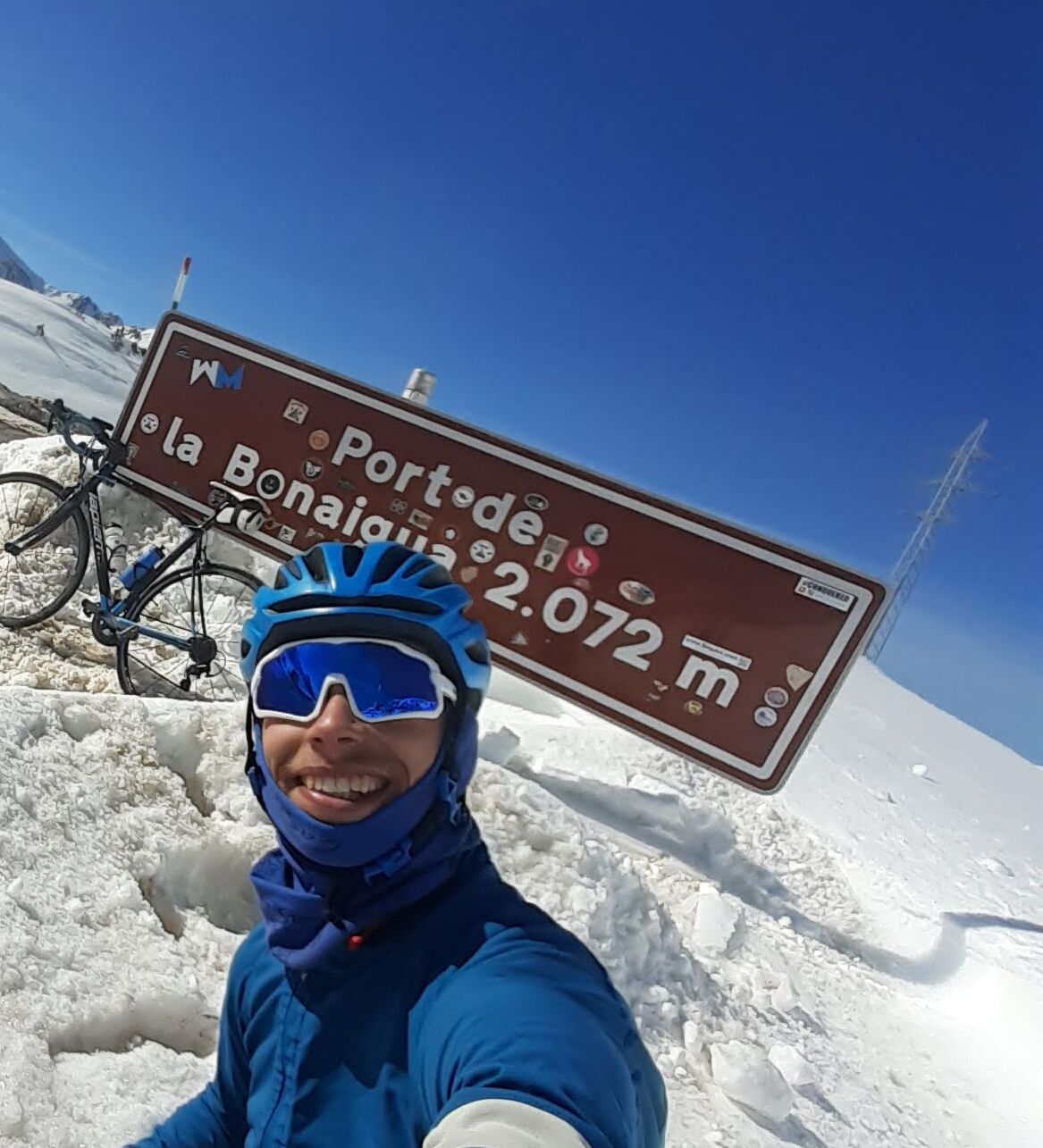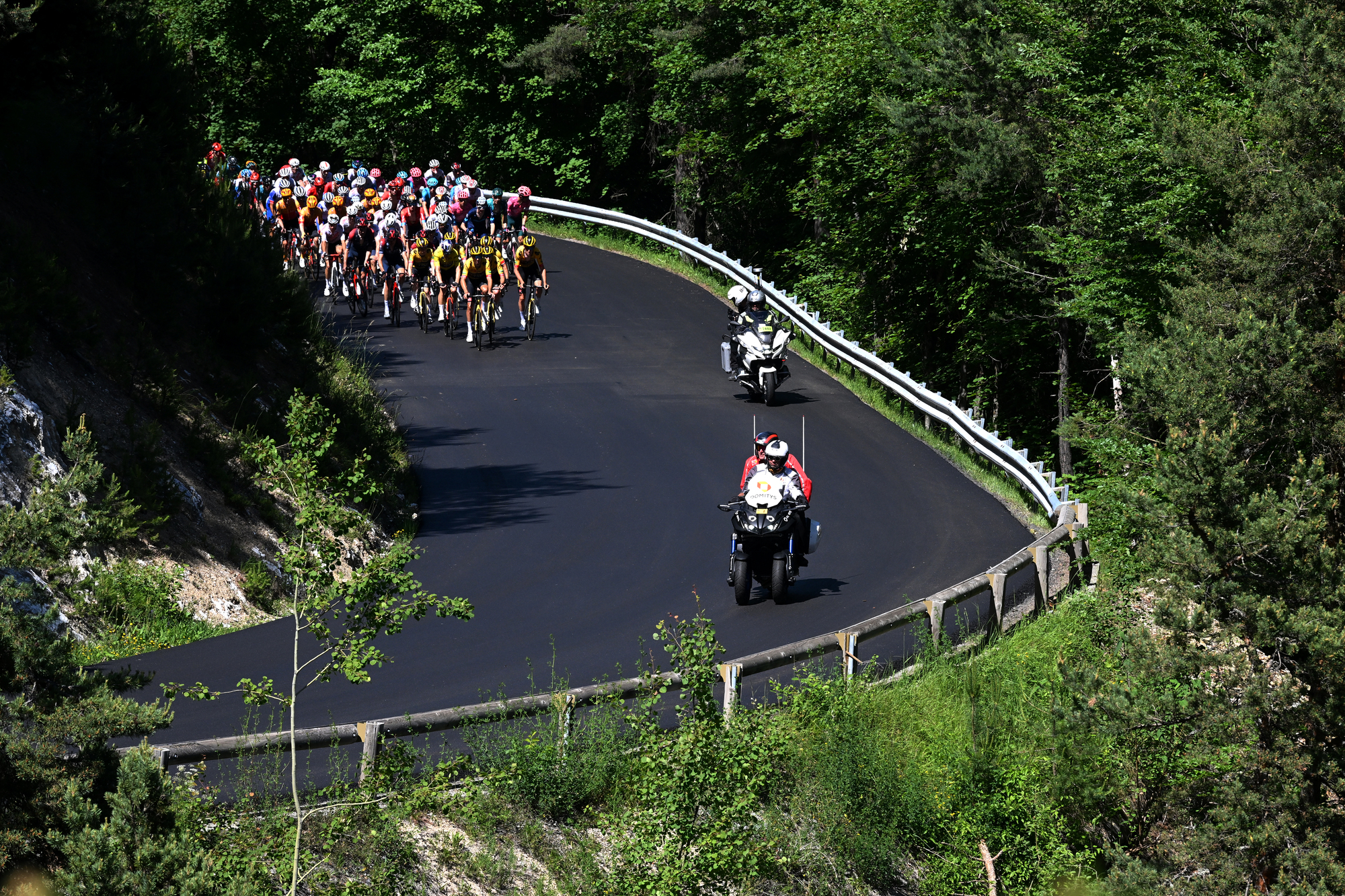Riders call for musette ban: '99% of the time there are crashes'
The topic of motorbikes has also reared its head once again, with riders alleging that they are influencing races.


A new racing season may be upon us with kit fresh, ambitions renewed and new heroes about to come to the fore, but one thing hasn’t changed: riders are still furious with several aspects of race safety.
The topic has been a constant one in the past few years, more so since the horrendous accident suffered by Fabio Jakobsen at the Tour of Poland in 2020.
Super-tucks and ‘puppy paws’ positions have been banned and there have been amendments to feed zones amongst many other changes, measures all brought in to make racing safer.
But incidents that appear avoidable keep happening, including a corner 50 metres from the finish during a sprint at the recent Challenge Mallorca, something Tosh Van der Sande of Jumbo Visma described to Cycling Weekly as “unacceptable. If you drove the race route before, you would have noticed it. They are small but easy things to fix.”
The biggest grievance that Van der Sande has, however, is with musettes - small bags of food and water that are handed out to riders during the day. According to him, they should be banned if the race distance is less than 140km.
“For me, this needs to change. Almost every time [riders collect musettes] a crash happens, 99% of the time. Or if they don’t crash, they are close,” he said.
“Under 140km, you do not need a musette. You take your stuff [before the race] and go back to the car - that’s more safer than musettes. In a long stage you can’t take everything with you, but in short stages I see teammates with musettes and I ask them why. You see it too often that something happens with musettes and for me it’s just a situation that creates danger.”
Get The Leadout Newsletter
The latest race content, interviews, features, reviews and expert buying guides, direct to your inbox!
Bahrain-Victorious’ Matej Mohorič shared Van der Sande’s assessment that such incidents happen. “In the races where everyone has a feed zone in the same place, it’s always messy, and there’s always crashes and stress," he concurred.
“When I started there were more accidents, but today we have more feed zones, they are more spread out and the teams don’t have the same [feeding] patterns. But of course it can still cause some problems.”
The Slovenian, however, disagreed that musettes should be banned for shorter races. “In big, important races there’s no time to go back to the car, and when it’s super warm we use musettes to give out bottles," he argued. "We take one every 20 minutes, so how many extra feed zones do you want if you don’t allow musettes to cover it?

Are motorbikes dictating the flow of a race?
It comes as veteran Dutch rider Bauke Mollema accused camera motorbikes of assisting the outcomes of races.
High-profile crashes, including with Julian Alaphilippe at the 2020 Tour of Flanders, have brought the issue to light in recent years, but Mollema is most angry by the aerodynamic advantage they provide to nearby riders.
One study by three scientists in 2016 reported that motorbikes provide a notable positive aerodynamic difference to following riders if they are within 10 metres, and Bollema is concerned that the camera-bikes are assisting the outcome of races.
“It’s one of the biggest problems in cycling these days,” the Trek-Segafredo rider said at the recent Volta a Valenciana. “It’s influencing races and it’s happening in a lot of them. It’s changing the race, and it can even decide if the breakaway will make it or not, or how fast the peloton will go.”
The UCI, cycling’s governing body, states that motorbikes must operate at a minimum distance of 10 metres from the riders, but Bollema claims that this rule is regularly flouted.
“[On stage two of the Valenciana race] it was a uphill finish and the motorbike was five metres in front. You could not move up,” Bollema moaned. “In Italy and Spain it is worse than in other countries and in my opinion the UCI is not doing enough to prevent motorbikes influencing the race.
“I would say in the last few years it has been getting worse, but of course I am paying more attention to it. There was some scientific research done a few years ago and they found that even with 30 metres of distance you have an advantage. Nowadays it’s 10 or 15 metres.
“A better distance would be 30-40 metres, but for the people watching at home maybe the images would not be so good. In the future we have to find something else like drones because right now it’s having a big influence on the cycling.”
As Cycling Weekly reported last year, there remains significant technological and operational obstacles to overcome before drones can be used in road races.
Cycling Weekly asked the UCI for response and will include their reply if they provide one.

Thank you for reading 20 articles this month* Join now for unlimited access
Enjoy your first month for just £1 / $1 / €1
*Read 5 free articles per month without a subscription

Join now for unlimited access
Try first month for just £1 / $1 / €1
A freelance sports journalist and podcaster, you'll mostly find Chris's byline attached to news scoops, profile interviews and long reads across a variety of different publications. He has been writing regularly for Cycling Weekly since 2013. In 2024 he released a seven-part podcast documentary, Ghost in the Machine, about motor doping in cycling.
Previously a ski, hiking and cycling guide in the Canadian Rockies and Spanish Pyrenees, he almost certainly holds the record for the most number of interviews conducted from snowy mountains. He lives in Valencia, Spain.
-
 'I'll take a top 10, that's alright in the end' - Fred Wright finishes best of British at Paris-Roubaix
'I'll take a top 10, that's alright in the end' - Fred Wright finishes best of British at Paris-RoubaixBahrain-Victorious rider came back from a mechanical on the Arenberg to place ninth
By Adam Becket Published
-
 'This is the furthest ride I've actually ever done' - Matthew Brennan lights up Paris-Roubaix at 19 years old
'This is the furthest ride I've actually ever done' - Matthew Brennan lights up Paris-Roubaix at 19 years oldThe day's youngest rider reflects on 'killer' Monument debut
By Tom Davidson Published